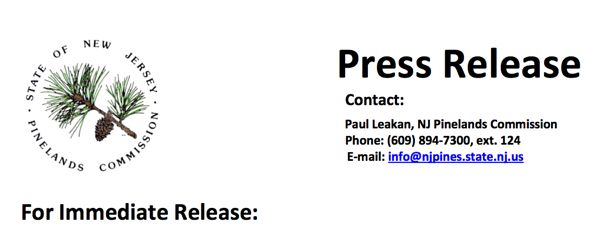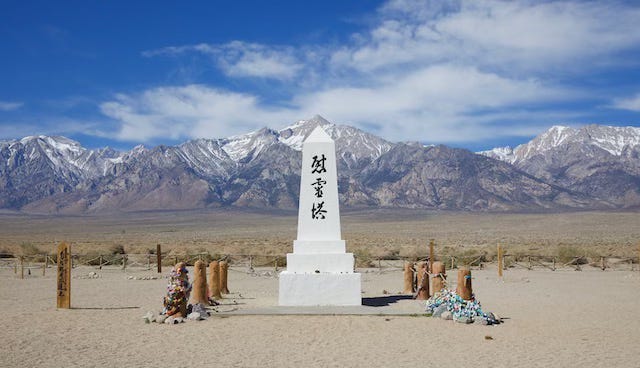Federal & State Officials Have Known Of Sinkhole Risks For Decades
State DEP Ignored Geological Reports & Buried Its Head In The Sand

(caption: sinkhole collapse on River Road, Montague, NJ during gas pipeline construction (7/9/13 – photo by Bill Wolfe)
Let’s not wait for an apartment building to collapse into a sinkhole before conducting an analysis of sinkhole risks.
[Update Below]
Two weeks ago, we wrote to warn that “shoes will continue to drop” in the latest sinkhole disaster.
Sure enough, as predicted, another huge sinkhole opened up, closing Interstate 80 in both directions.
NJ Spotlight’s coverage again focused on the nuisance impacts to drivers and economic impacts on local businesses, instead of investigating:
1) what is going on geologically to cause these sinkholes;
2) document the extent of the problem and the risks to not only roads, but inhabited buildings and critical infrastructure; and
3) holding accountable whoever is responsible for the geophysical and engineering analysis that should have known about and avoided these risks, see:
But NJ Spotlight’s coverage was not only misfocused.
It created a dangerous false impression that the sinkhole problem is a “new threat”.
Worse, it created this false impression via an interview with a local resident, who speculated about the cause and claimed it was a “this new threat” (listen at time 2:30).
Amazingly, NJ Spotlight then casually reported that another huge sinkhole recently formed in this resident’s apartment complex!
Federal and State scientists and planners, including USGS, NJ DEP, and the State Planning Commission – have known about sinkhole risks from abandoned mines, limestone (karst) geology, and illegal disposal of construction and demolition waste for decades.
I wrote about that science in response to the Tennessee Gas Pipeline sinkhole collapse on River Road, Montague, NJ on 7/9/13. I questioned how such a disaster was allowed to happen and criticized lax DEP regulatory oversight of pipeline and other construction.
So I’ll repeat that science:
From the US Geological Survey:
Structural and lithologic control of karst features in northwestern New Jersey
From the NJ State Geologist:
From DEP and State planners
And we used DEP data to warn about abandoned mines:

At that time, I reached out to DEP and State legislators to urge that they act to investigate the extent of the risks and adopt protective regulations to prevent future disasters.
State officials did nothing.
There needs to be an immediate science based investigation of the extent and location of sinkhole risks.
Let’s not wait for an apartment building to collapse into a sinkhole before conducting that analysis.
And NJ Spotlight and government officials must stop focusing on bagel shops and traffic jams.
[Update:
- In terms of risks to occupied buildings, I was thinking about the collapse of the 12-story Champlain Towers South condominium in Surfside, Florida, on June 24, 2021, one of the deadliest structural disasters in American history. Ninety-eight people were killed and many others injured.
Subsurface conditions (geology, chemistry, corrosion, erosion, et al) were like major causes. FYI, the National Institute Of Standards and Technology recently issued this:
- In terms of State regulatory requirements, I found that Minnesota has specific state stormwater management regulatory requirements – see:
NJ DEP has a vague design standard, see:
7:8-5.2 Stormwater management measures for major development
https://dep.nj.gov/wp-content/uploads/rules/rules/njac7_8.pdf
(i) Design standards for stormwater management measures are as follows:
1. Stormwater management measures shall be designed to take into account the existing site conditions, including, but not limited to, environmentally critical areas; wetlands; flood-prone areas; slopes; depth to seasonal high water table; soil type, permeability, and texture; drainage area and drainage patterns; and the presence of solution-prone carbonate rocks (limestone);”
I saw that federal and State highway engineering manuals also focus on karst. Wonder if NJ DOT has any?
- In terms of risks to infrastructure, water and sewer lines are vulnerable, but so are hazards like gas pipelines. See this Tennessee gas pipeline construction related sinkhole along River Road in Montague:
https://www.wolfenotes.com/2013/07/tennessee-gas-pipeline-drilling-causes-sinkhole-road-collapse/
end update]







